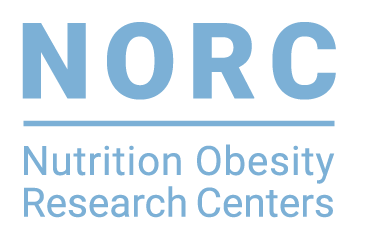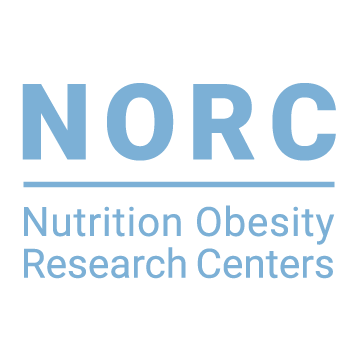Category: Publications
Effect of Zinc Supplementation on Insulin Secretion: Interaction Between Zinc and SLC30A8 Genotype in Old Order Amish
Abstract SLC30A8 encodes a zinc transporter in the beta cell, and individuals with a common missense variant in this gene experience a lower early insulin response to glucose and an increased risk of type 2 diabetes. We hypothesized that zinc supplementation may improve insulin secretion in a genotype-dependent manner. To test this hypothesis, we evaluated the early insulin response to glucose (using frequently sampled intravenous glucose tolerance testing) by SLC30A8 genotype before and after 14 days of supplementation with oral zinc acetate twice daily in 55 healthy non-diabetic Amish individuals. Key Findings Individuals with the risk allele had the lowest … Read More »
Categories: Publications Tags: Mid-Atlantic MarylandModeling the Effect of Cigarette Smoke on Hexose Utilization in Spermatocytes
Abstract We set out to determine whether the addition of an aryl hydrocarbon receptor (AHR) antagonist has an effect on glucose/fructose utilization in the spermatocyte when exposed to cigarette smoke condensate (CSC). We exposed male germ cells to 5 and 40 μg/mL of CSC ± 10 μmol/L of AHR antagonist at various time points. Immunoblot expression of specific glucose/fructose transporters was compared to control. Radiolabeled uptake of 2-deoxyglucose (2-DG) and fructose was also performed. Spermatocytes utilized fructose nearly 50-fold more than 2-DG. Uptake of 2-DG decreased after CSC + AHR antagonist exposure. Glucose transporters (GLUTs) 9a and 12 declined after … Read More »
Categories: Publications Tags: Washington University St. LouisFunctional Identification of a Neurocircuit Regulating Blood Glucose
Abstract Previous studies implicate the hypothalamic ventromedial nucleus (VMN) in glycemic control. Here, we report that selective inhibition of the subset of VMN neurons that express the transcription factor steroidogenic-factor 1 (VMNSF1neurons) blocks recovery from insulin-induced hypoglycemia whereas, conversely, activation of VMNSF1neurons causes diabetes-range hyperglycemia. Moreover, this hyperglycemic response is reproduced by selective activation of VMNSF1fibers projecting to the anterior bed nucleus of the stria terminalis (aBNST), but not to other brain areas innervated by VMNSF1neurons. We also report that neurons in the lateral parabrachial nucleus (LPBN), a brain area that is also implicated in the response to hypoglycemia, make … Read More »
Categories: Publications Tags: University of WashingtonCombination of Obesity and a Common Human Infection May Increase Anxiety Levels
Anxiety and anxiety-related disorders are the most common mental health problem in the United States, with obese people having higher rates of anxiety than non-obese people. Data from a recent study reveal that this increased anxiety may be caused by an interaction between obesity and a very common human infection, which results in immunological changes in the brain. Patricia Sheridan, PhD, research assistant professor of nutrition at the UNC Gillings School of Global Public Health, has worked for years to determine how diet alters inflammatory processes in the brain. As the senior author of the study “Diet-induced obesity prolongs neuroinflammation … Read More »
Categories: News, Publications Tags: University of North Carolina at Chapel HillAlterations in Human Milk Leptin and Insulin are Associated with Early Changes in the Infant Intestinal Microbiome
Abstract Increased maternal body mass index (BMI) is a robust risk factor for later pediatric obesity. Accumulating evidence suggests that human milk (HM) may attenuate the transfer of obesity from mother to offspring, potentially through its effects on early development of the infant microbiome. The objective of this study was to identify early differences in intestinal microbiota in a cohort of breastfeeding infants born to obese compared with normal-weight (NW) mothers. We also investigated relationships between HM hormones (leptin and insulin) and both the taxonomic and functional potential of the infant microbiome. Study Design Clinical data, infant stool and fasting … Read More »
Categories: Publications Tags: University of Colorado Anschutz Medical CampusValidity and Reliability of a 4-Compartment Body Composition Model
Abstract Body volume (BV), one component of a four-compartment (4C) body composition model, is commonly assessed using air displacement plethysmography (BodPod). However, dual-energy x-ray absorptiometry (DEXA) has been proposed as an alternative method for calculating BV. This investigation evaluated the validity and reliability of DEXA-derived BV measurement and a DEXA-derived 4C model (DEXA-4C) for percent body fat (%BF), fat mass (FM), and lean mass (LM). Using a total sample of 127 men and women, a traditional 4C body composition reference assessment was completed. A DEXA-4C model was created by linearly regressing BodPod BV with DEXA FM, LM, and bone mineral … Read More »
Categories: Publications Tags: University of North Carolina at Chapel HillMetabolic Reprogramming of White Blood Cells Controls Inflammation in Fat
Researchers in the UNC Gillings School of Global Public Health have found that it is possible to control inflammation in fat tissue by manipulating the presence of a specific metabolic protein in a type of white blood cell called a macrophage. This metabolic reprogramming may provide a crucial strategy for weakening the link between obesity and illnesses such as diabetes. This research is the topic of a study by the lab of Liza Makowski, PhD, assistant professor of nutrition at the Gillings School and lead author of a new paper about the findings. Makowski also is a member of the … Read More »
Categories: News, Publications Tags: University of North Carolina at Chapel HillMetabolic Effects of Long-Term Reduction in Free Fatty Acids with Acipimox in Obesity
Abstract Increased circulating free fatty acids (FFAs) have been proposed to contribute to insulin resistance in obesity. Short-term studies have investigated the effects of acipimox, an inhibitor of hormone-sensitive lipase, on glucose homeostasis, but longer-term studies have not been performed. This study examined the hypothesis that long-term treatment with acipimox would reduce FFA and improve insulin sensitivity among nondiabetic, insulin-resistant, obese subjects. Citation Makimura H, Stanley TL, Suresh C, De Sousa-Coelho AL, Frontera WR, Syu S, Braun LR, Looby SE, Feldpausch MN, Torriani M, Lee H, Patti ME, Grinspoon SK. Metabolic Effects of Long-Term Reduction in Free Fatty Acids With … Read More »
Categories: Publications Tags: Harvard Medical SchoolHypothalamic POMC Deficiency Improves Glucose Tolerance Despite Insulin Resistance by Increasing Glycosuria
Abstract Hypothalamic proopiomelanocortin (POMC) is essential for the physiological regulation of energy balance; however, its role in glucose homeostasis remains less clear. We show that hypothalamic arcuate nucleus (Arc)POMC-deficient mice, which develop severe obesity and insulin resistance, unexpectedly exhibit improved glucose tolerance and remain protected from hyperglycemia. To explain these paradoxical phenotypes, we hypothesized that an insulin-independent pathway is responsible for the enhanced glucose tolerance. Indeed, the mutant mice demonstrated increased glucose effectiveness and exaggerated glycosuria relative to wild-type littermate controls at comparable blood glucose concentrations. Central administration of the melanocortin receptor agonist melanotan II in mutant mice reversed alterations … Read More »
Categories: Publications Tags: University of MichiganVolume and Value of Big Healthcare Data
Abstract Modern scientific inquiries require significant data-driven evidence and trans-disciplinary expertise to extract valuable information and gain actionable knowledge about natural processes. Effective evidence-based decisions require collection, processing and interpretation of vast amounts of complex data. The Moore’s and Kryder’s laws of exponential increase of computational power and information storage, respectively, dictate the need rapid trans-disciplinary advances, technological innovation and effective mechanisms for managing and interrogating Big Healthcare Data. In this article, we review important aspects of Big Data analytics and discuss important questions like: What are the challenges and opportunities associated with this biomedical, social, and healthcare data avalanche? … Read More »
Categories: Publications Tags: University of Michigan
